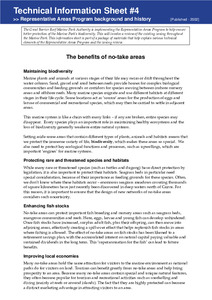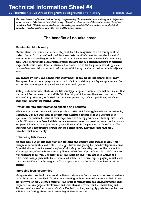Please use this identifier to cite or link to this item:
https://hdl.handle.net/11017/770

Full metadata record
| DC Field | Value | Language |
|---|---|---|
| dc.date.accessioned | 2012-10-26T01:37:10Z | null |
| dc.date.available | 2012-10-26T01:37:10Z | null |
| dc.date.copyright | 2002 | en |
| dc.date.issued | 2002 | en-US |
| dc.identifier.uri | https://hdl.handle.net/11017/770 | null |
| dc.description.abstract | Marine plants and animals at various stages of their life may swim or drift throughout the water column. Sand, gravel and mud between reefs provide homes for complex biological communities and feeding grounds or corridors for species moving between inshore nursery areas and offshore reefs. Many marine species migrate and use different habitats at different stages in their life cycle. Some locations act as ‘source’ areas for the production of eggs and larvae of commercial and recreational species, which may then be carried to settle in adjacent areas. | en |
| dc.publisher | Great Barrier Reef Marine Park Authority | en |
| dc.relation.ispartofseries | Technical Information Sheet | en |
| dc.title | Technical information sheet 4: The benefits of no-take areas | en |
| dc.type | Brochure | * |
| dc.subject.asfa | Protected areas | en |
| dc.format.pages | 2 | en |
| dc.contributor.corpauthor | Great Barrier Reef Marine Park Authority | en |
| dc.subject.apais | Environmental management | en |
| dc.publisher.place | Townsville | en |
| dc.subject.collection | Managing Multiple Use | en |
| dc.relation.connectiontogbrmpa | GBRMPA published this item | en |
| dc.subject.category | Information Publication Scheme | en |
| dc.subject.category | Zones, plans and maps | en |
| dc.subject.location | Reef-wide | en |
| Appears in Collections: | Management | |
Files in This Item:
| File | Description | Size | Format | |
|---|---|---|---|---|
| Technical-information-sheet-4-Benefits-of-no-take-areas-2002.pdf | 115.22 kB | Adobe PDF |  View/Open |
Items in ELibrary are protected by copyright, with all rights reserved, unless otherwise indicated.
